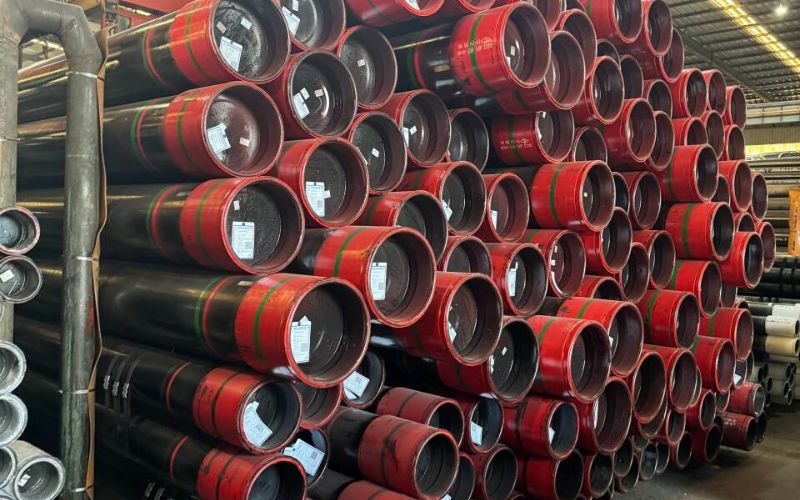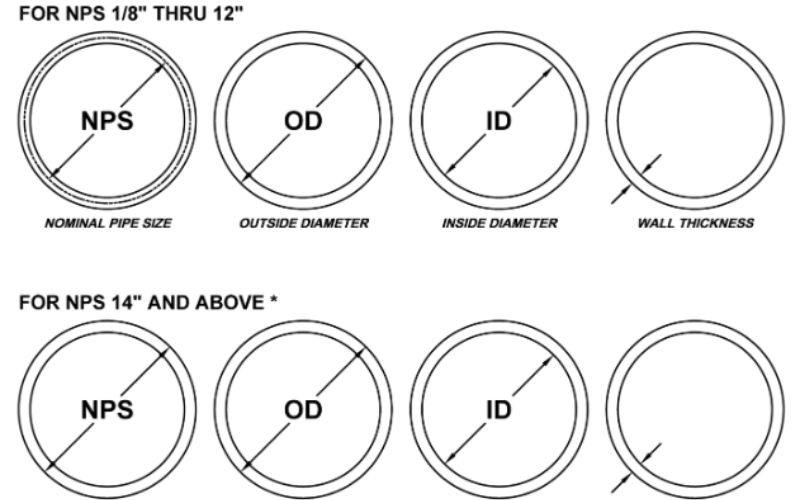From construction to automotive; from the medical industry to food processing-these coils find applications in multiple industries. Sturdy, heavy, and resistant to corrosion-these make stainless steel coils an indispensable material for any modern industry setting. So what exactly makes stainless steel coils so special in their application? This guide is prepared to assist manufacturers seeking further refinement in production processes, designers trying their hands on versatile material options, or just anyone interested in the industrial aspect behind the staple.
This guide serves as a comprehensive resource that discusses the various types of stainless steel coils, their purposes, advantages, and how to select one that fits your needs. With this knowledge, you will gain an overview of how these coils are at the forefront of innovation and enhancement in numerous industries.
Understanding Stainless Steel Coil
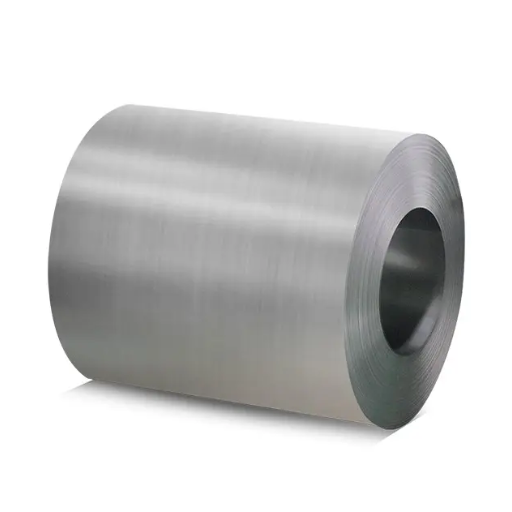
A stainless steel coil is nothing but a thin, continuous strip of stainless steel that gets rolled into a coil during production. The coils are adaptable, and have everyday application in almost any industry, given their durability, corrosion resistance, and high-temperature resistance properties. Stainless steel coils are available in numerous grades and finishes and are utilized in construction, automotive, kitchen equipment, and medical devices, among other applications. Their reliability and versatile properties make them the preferred choice when projects require strength and durability.
What is Stainless Steel Coil?
Stainless steel coil is a flat-rolled product made out of stainless steel, which is renowned for its excellent resistance to corrosion, heat, and chemical exposure. With individual widths, thicknesses, and finishes, these coils serve various industries, assuring versatility and customization. Usually made of stainless steel grades 304, 316, and 430, there are varieties of stainless steel coil with specific properties meant for different applications. For instance, the 304 series is generally agreed to be corrosion-resistant and versatile, for general applications, while 316 is the best option in places where chemicals or saltwater exposure exists, thanks to its resistance to pitting.
Applications of stainless steel coils include structural supports, automotive parts, kitchen appliances, surgical tools, and energy pipelines. Such versatility is due to its toughness, ease of fabrication, and aesthetic appearance. In big industries where strength, long life, and wear resistance under very demanding conditions are sought after, stainless steel coils will always make for one of the best materials.
Types of Stainless Steel Coil
Stainless steel coils include types like hot-rolled, cold-rolled, specialty, and grades such as 304, 316, 430, and 201, each tailored for specific applications.
|
Parameter |
Details |
|---|---|
|
Hot-Rolled |
Durable, structural |
|
Cold-Rolled |
Smooth, precise |
|
Specialty |
Enhanced properties |
|
304 Grade |
General use, corrosion-resistant |
|
316 Grade |
Marine, chemical use |
|
430 Grade |
Affordable, moderate resistance |
|
201 Grade |
Cost-effective, decorative |
Common Grades and Their Properties
Common stainless steel grades include 304, 316, 430, and 410, each offering unique properties like corrosion resistance, strength, and specific applications.
|
Grade |
Corrosion |
Strength |
Applications |
|---|---|---|---|
|
304 |
High |
Moderate |
Food, medical |
|
316 |
Very high |
Moderate |
Marine, chemical |
|
430 |
Moderate |
Moderate |
Automotive, appliances |
|
410 |
Low |
High |
Cutlery, tools |
Specifications of Stainless Steel Coil
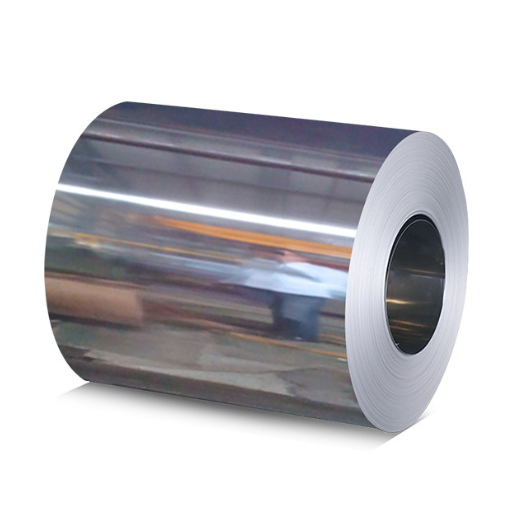
Stainless steel coil specifications vary in order to fulfill disparate manufacturing requirements. These are the key parameters one might expect:
- Thickness: From 0.2mm to 6mm, with possibilities for bespoke thicknesses as deemed fit for the application.
- Width: The conventional widths normally lie between 500mm and 2,000 mm. Custom sizes, however, are immensely popular.
- Finish: The usual finishes are No. 2B (smooth and reflective), No. 4 (brushed), and BA (bright annealed), based on the function and aesthetics.
- Grades: Most used grades are 304, 316, and 430, chosen according to ant-corrosive properties, and strength, or cost is another issue.
- Tensile Strength: Depending on the grade, most of the coils have tensile strength between 515 MPA and 750 MPA.
- Core Material: Basically, chromium-nickel alloys are used to provide increased durability and corrosion resistance.
These specifications render stainless steel coils fit to be used in construction, automobiles, conspicuously in kitchen hardware, and industrial equipment.
304 vs 316 Stainless Steel Coil
304 stainless steel coils are cost-effective and versatile, while 316 coils offer superior corrosion resistance due to added molybdenum, making them ideal for harsh environments.
|
Parameter |
304 Coil |
316 Coil |
|---|---|---|
|
Corrosion |
Moderate |
High |
|
Strength |
Moderate |
Slightly higher |
|
Cost |
Lower |
20-40% higher |
|
Applications |
General use |
Marine, chemical |
|
Key Element |
No molybdenum |
2-3% molybdenum |
|
Heat Resistance |
Up to 870°C |
Up to 925°C |
304L and 316L Specifications
304L stainless steel is cost-effective and versatile, while 316L offers superior corrosion resistance due to added molybdenum, making it ideal for harsh environments.
|
Parameter |
304L |
316L |
|---|---|---|
|
Corrosion |
Moderate |
High |
|
Strength |
Moderate |
Slightly higher |
|
Cost |
Lower |
20-40% higher |
|
Applications |
General use |
Marine, chemical |
|
Key Element |
No molybdenum |
2-3% molybdenum |
|
Weldability |
Excellent |
Excellent |
Thickness and Width Tolerances
The manufacturing of stainless steel coils is subjected to stringent tolerances for thickness and width so as to suit diverse industrial applications. Thickness tolerances vary from grade to grade and from use to use and may be ±0.02 mm to ±0.05 mm. Thinner coils, subjected to very stringent if not the tightest tolerances, are used for applications such as electronics, whereas general-purpose coils used in construction and furniture manufacture would allow somewhat bigger variations.
Width tolerances are highly requisite and range from ±0.25 mm up to ±0.80 mm. Standard widths for stainless steel coils usually lie in the range 600 mm to 2000 mm, with most commonly used widths being 1000 mm, 1219 mm (48 inches), or 1500 mm according to industry standards. To ensure these specifications, manufacturers use the most advanced rolling and slitting techniques and further assure easy incorporation of the coils in downstream processing and fabrication activities.
Strict adherence to these tolerances translates into making the products uniformly, minimizing wastage during manufacturing processes, and thereby ensuring excellent performance at the end-user application.
Applications of Stainless Steel Coil
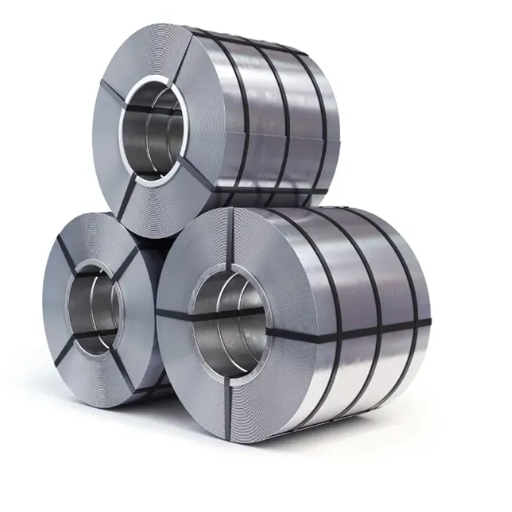
Such coils are used across a multitude of industries because of their durability, corrosion resistance, and versatility. Some of the applications include the following:
- Construction: Architectural panels, roofing, and structural components.
- Automotive: Exhaust systems, trims, and body parts because they require strength and wear resistance.
- Food Processing: Sanitary equipment, storage tanks, and kitchen utensils.
- Medical Equipment: Surgical instruments, hospital surfaces, and equipment requiring sterilization.
- Industrial Manufacturing: Chemical tanks, heat exchangers, and heavy-duty machinery.
Possible applications of stainless steel coils bring to attention the roles they maintain in high-performance engineering at the forefront of longevity.
Industrial Applications
Modern industries cannot do without stainless steel coils. They are very much demanded where durability and anti-corrosion properties come into play. In the construction field, stainless steel coils find major application in architectural cladding, roofing, and structural works, bearing weathering stresses with some rigidity so as not to lose the structure. According to the report, the global demand for stainless steel in construction is anticipated to grow steadily with urbanization and infrastructure development.
Renewable energy systems also see the use of stainless steel coils in increasing numbers because of the higher mechanical properties that specifications impose on materials. Stainless steel coils are used extensively in solar panels, wind turbines, and geothermal applications, wherein extreme operating conditions demand the best choice of strength and reliability. Furthermore, from the chemical and petrochemical realms, stainless steel coils are in demand for tanks for storage, pipelines, and heat exchangers to resist corrosion against aggressive chemicals.
According to the data, the global stainless steel market is about to rise prominently, and with a forecasted CAGR of approximately 5% over the next decade, the growth is attributable mainly to heightened applications towards energy-efficient solutions, industrial advancements, and new manufacturing technologies. Stainless steel coils still stand to fulfill the industry’s worldwide demand for high-performance while also paving the path for innovation and sustenance.
Marine Applications
It has been the stainless steel that has been given prominence in marine applications for being highly corrosion resistant, strong, and durable in harsh environments. Marine-grade stainless steel, such as those of the 316 and 316L varieties, are meant to stand against detrimental effects of prolonged saltwater and moisture ambiance, whereas for utilization in marine engineering, offshore platforms, and desalination facilities. The growing importance of sustainability and longevity has given an aspiration for growing at the rate of 4.7% in marine industrial demand for corrosion-resistant materials worldwide.
Stainless steel finds application also in the construction of vital maritime components such as propeller shafts, piping systems, and storage tanks that benefit from the high resistance of stainless steel to pitting and crevice corrosion, both of which occur in marine environments. On top of that, stainless steel is reprocessed into secondary raw material, giving it the cordiality of eco-friendly materials in marine construction, so it meets strict environmental criteria while slashing down on operational costs over time.
Use in Tubing and Slit Coil
Since the stainless steel truly is one-of-a-kind, it is unrivaled in creating tubing and slit coil, offering superior traits serving across diverse industrial applications. Because of its great strength-to-weight ratio and anti-corrosion properties, the metal is trusted to work into durable tubing for automotive, aerospace, and construction industries. Stainless steel tubing is securely installed for fuel lines, hydraulic systems, and structural support requirements where precision and reliability matter.
Stainless steel for slit coil accommodates customization with width precision up to the requirements needed. Relevant industries would be electronics, medical devices, and HVAC systems for slit coil with even consistency and acceptable fabrication techniques. Recent statistics show that stainless steel slit coils have relatively high tensile strength so they can withstand mechanical stress and still keep their form with time.
Austenitic grades such as 304 and 316 are the most selected choices in this regard due to their better rust resistance and weldability. Currently, world data about the market advocates that demand for stainless steel tubing and slit coil is constantly rising, powered by their use for emerging renewable and green technologies, such as in solar panel frames and energy-efficient components. These variable forms uphold the goal of sustainable engineering as they are 100-percent recyclable, environmentally friendly with the lowest ecological footprint, and aids the extended lifespan of any application subjected to permanent attacks from hostile weather conditions.
Processing Techniques for Stainless Steel Coil
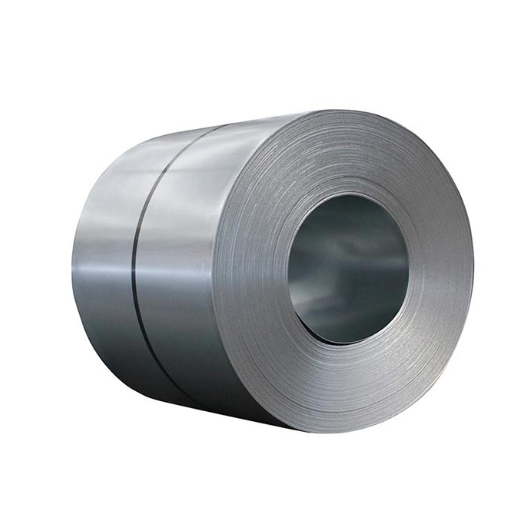
There are several important methods for positioning stainless steel coils in the arrangement for size, properties, and surface finish required. The primary methods are:
- Slitting or Narrowing: The coil is slit into narrow-width strips by means of a sharp blade to meet size requirements for varied applications.
- Annealing: Any heat treatment given to the coil increases the softness, ductility, and corrosion resistance of the material, thus making it suitable for forming or further processing.
- Pickling: This step removes contaminants on the surface like scale or rust, in chemical terms, so as to make the coil bright and smooth.
- Polishing: The polishing of the surface is carried out to obtain an advertised finish ranging from matte to mirror finish, depending on the application.
- Cut-to-Length: The coil is cut to flat sheets of specific lengths that require application with very precise dimensions and smooth edges.
Such processes provide the stainless steel coil with requisite applications in construction, automotive, and renewable energy industries for which quality and performance are essential.
Cold Rolling vs Hot Rolling
Cold rolling produces stronger, smoother, and more precise steel, while hot rolling is cheaper and better for large, less precise applications.
| Parameter | Cold Rolling | Hot Rolling |
|---|---|---|
|
Strength |
Higher |
Lower |
|
Surface |
Smooth, precise |
Rough, scaled |
|
Cost |
Higher |
Lower |
|
Applications |
Precision parts |
Structural components |
|
Processing |
Room temperature |
High temperature |
|
Tolerances |
Tight |
Loose |
Welding Capabilities of Stainless Steel Coils
Stainless steel coils offer excellent welding capabilities, making them a highly versatile material across numerous industries, including construction, automotive, and aerospace. The inherent properties of stainless steel, such as corrosion resistance, high strength, and the ability to withstand extreme temperatures, contribute to its welding performance.
- Common Welding Techniques
Various welding processes can be employed with stainless steel coils, including TIG (Tungsten Inert Gas) welding, MIG (Metal Inert Gas) welding, and resistance welding. TIG welding is particularly well-suited for creating precise, high-quality welds, especially in thinner stainless steel coils. MIG welding is efficient for larger projects, offering faster weld speeds, while resistance welding is ideal for joining thin material sections quickly without compromising strength.
- Weldability of Stainless Steel Grades
The weldability of stainless steel coils depends on the specific grade. For instance:
Austenitic Stainless Steels (e.g., 304, 316): These grades are among the easiest to weld, providing strong, ductile joints with excellent corrosion resistance. They are widely used in applications such as food processing equipment and pipelines.
Ferritic Stainless Steels (e.g., 430, 409): Though weldable, ferritic grades require careful heat control to prevent grain growth and brittleness in the heat-affected zone.
Martensitic Stainless Steels (e.g., 410, 420): With higher carbon content, these steels are harder to weld, as they are prone to cracking. Preheating and post-weld treatments can improve results.
Duplex Stainless Steels: This type strikes a balance between austenitic and ferritic properties, requiring expertise to maintain the correct ratios of ferrite and austenite during the welding process. Their high strength makes them an excellent choice for oil and gas applications.
- Heat Management
Welding stainless steel requires careful control of heat input to mitigate warping and distortion. Excessive heat can lead to discoloration or loss of corrosion resistance due to the formation of chromium carbide, a process known as sensitization. Using modern welding equipment with heat control capabilities can help minimize these challenges.
- Shielding Gas for Welding
To achieve clean and strong welds, it’s essential to use the appropriate shielding gas, which prevents contamination from atmospheric gases like oxygen or nitrogen. Pure argon or argon mixed with other gases like helium, hydrogen, or carbon dioxide is commonly used for stainless steel welding.
- Advancements in Welding Technology
Recent technological advancements, including automated welding systems, are making welding stainless steel coils more efficient and consistent. These systems enable precise control over parameters such as heat, speed, and filler material application, reducing operator error and improving weld quality.
Heating and Other Processing Methods
Heating and processing techniques used in proper manufacture and construction form stainless steel in an effective manner. Treatment methods such as annealing, hardening, and stress-relieving may be applied to manipulate the stainless steel’s mechanical and physical properties for improved suitability for different applications. For example, annealing involves heating stainless in an intermediate temperature range between 1,900°F and 2,100°F, and then subjecting it to rapid cooling. This improves ductility and releases internal stresses, rendering stainless steel relatively easy to fabricate and weld.
Hardening is carried out to increase strength and enhance wear resistance in certain grades of stainless steel such as in martensitic stainless steels. Hardening treatments for various alloys vary between about 1,700°F and 2,000°F. Strength and wear resistance improvements usually lead to better performance in severe applications associated with automotive or aerospace components.
These cold working operations further increase stainless steel strength because they bring changes to the microstructure. Data from the present industry shows that cold working of stainless steel can increase tensile strength by up to 50%, which fine-tunes applications where extreme hardness is demanded without adding extra weight to the material.
Coupled with these heating and processing techniques are the recent developments in precision control devices, such as infrared thermometers and induction heating systems. It has been found that the combined studies and use of these technologies in the industry environment led to improvements in process efficiency of at least 20%, which means more material could be saved while less time was consumed in manufacturing. This is one example showing how accurate heating and processing have become extremely important in making stainless steel products highly adaptable and high-performing for industry.
Choosing the Right Stainless Steel Coil
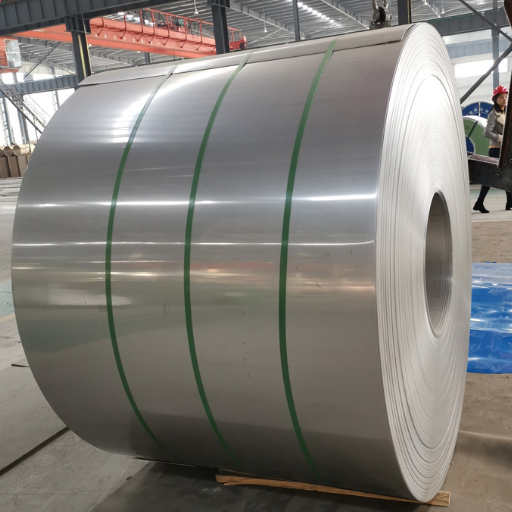
With each application emphasizing a different need, it is extremely important that the right choice of stainless steel coil be made. Usually, one must start by determining the stainless steel grade in terms of corrosion resistance, mechanical strength, and heat resistance. Thus, type 304 is very commonly used for all purposes, whereas 316 stands for higher corrosion resistance, and 430 is being used in less expensive applications requiring some durability.
Backing up by thickness and finish or surface treatment of the metal will safeguard the life of the coil and the look of the product. Also, it should conform to all relevant industry standards or certifications that govern your particular use to ensure quality and performance. Hence, working with a reliable supplier and review of some technical specifications will help secure the required properties of the coil whether for utilization or enhancement of your project.
Factors to Consider When Selecting Grade
When selecting the appropriate grade of material for your project, the most important specifications should be examined to tailor a good set of performance, cost-effectiveness, and durability. Mechanical properties such as tensile strength, yield strength, and elongation must be of equal consideration, as they dictate its appropriateness to certain applications. For example, high-strength grades are great for load-bearing applications while ductile grades are better suited for components requiring deformation ability such as shaping.
If the environment is a tough one prone to high moisture levels, chemicals, or rapid temperature fluctuations, corrosion resistance must be considered. Grades such as stainless steel, grade 304, or grade 316 are generally chosen for being superior to any other grades in resisting corrosion. For less critical components, the less expensive grades can be considered.
Then, of course, depending on the application, thermal and electrical conductivity properties also come into the equation. Grades such as copper or aluminum boast high conductivity and so are instrumental in electrical as well as heat transfer systems. On the other hand, projects that are being cast in high-temperature environments may require materials in relation to thermal stability concerns, such as high-carbon steels or nickel-alloy grades.
Then comes the manufacturing stage. For example, some steel or aluminum grades have been produced to accept machining or forming processes easily, depending on whether material needs to be shaped, welded, or cut with some precision. Choosing an inappropriate grade can slow down the production process and might later cost you a bit more to fix its defects or to replace bits of equipment worn down by an abrasive process.
Finally, include in your challenge the certifications and compliance standards, such as ASTM, ISO, or EN standards, which assure strict quality requirements. For instance, structural steel grades certified according to A36 or S355 standards guarantee dependable performance for construction projects where safety relates above all. Studies indicate compliance with such standards may reduce failure risks by 35% over the project life cycle, making non-compromise for any red-hot project.
Thus, by considering these factors—mechanical properties, corrosion resistance, thermal conductivity, machinability, and certification—one can come to an appropriate choice suited to the specific project.
Supplier Considerations and Certifications
In selecting a supplier, I usually look at those who have established their presence as providers of good-quality materials meeting typical industry standards. They will have to provide me with certification evidence such as ISO and ASTM to attest that they do adhere to safety and performance requirements strictly. Consistent, reliable supply willing to provide competitive prices will be another aspect I assess. I also consider the supplier’s customer support responsiveness. This gives me confidence that the materials used in my projects can be relied upon and conform to present regulations.
ISO Certification Importance
To my utmost desire, an ISO certification stands paramount to me because it assures that the items I use do reach international standards of quality, safety, and performance. It ensures uniformity and predictable performance, giving me the utmost confidence and assurance that the products meet higher regulatory requirements and would indeed serve as they give promise while being applied in my projects.
Reference Sources
1. “ANALISIS PENERAPAN KONSEP LEAN MANUFACTURING PADA PROSES PRODUKSI STAINLESS STEEL COIL UNTUK MEREDUKSI PEMBOROSAN (WASTE) DI PT. XYZ”
- Authors: Ivonne Rakha Salsabila, R. Rochmoeljati
- Publication Date: March 31, 2021
- Type: Conference Paper
- Citation Token: (Salsabila & Rochmoeljati, 2021, pp. 120–131)
- Key Findings:
- The study aimed to identify and reduce waste in the production process of stainless steel coils at PT. XYZ.
- Implemented lean manufacturing principles using value stream mapping and Failure Mode and Effect Analysis (FMEA).
- Achieved a reduction in production time from 461 minutes to 416 minutes.
- Identified the main causes of waste, including improper setup of hot buckets and unplanned downtime due to insufficient machine maintenance.
- Methodology:
- Employed lean manufacturing tools, particularly value stream mapping and FMEA, to analyze and improve production processes.
2. “Inspection of Defects Depth for Stainless-Steel Sheets Using Four-Coil Excitation Sensor and Deep Learning”
- Authors: Saibo She, Xinnan Zheng, Tian Meng, Kuohai Yu, W. Yin
- Publication Date: 2023
- Journal: IEEE Transactions on Instrumentation and Measurement
- Citation Token: (She et al., 2023, pp. 1–10)
- Key Findings:
- Proposed a novel four-coil excitation sensor to suppress lift-off effects in eddy current testing for detecting defects in stainless steel sheets.
- Introduced deep learning models to accurately identify defect depths and angles.
- Achieved a high accuracy rate of 99.8% with the proposed 1-D convolutional neural network (CNN) model.
- Methodology:
- Developed an experimental platform to acquire defect signals and trained the CNN model using real and imaginary parts of the induced voltage.
3. “In vitro study of the stretching time-associated force magnitude generated by NiTi and stainless-steel closed coil springs”
- Authors: Jennifer Xavier Ongko, M. Yusuf, Siti Bahirrah
- Publication Date: January 6, 2023
- Journal: Majalah Kedokteran Gigi Indonesia
- Citation Token: (Ongko et al., 2023)
- Key Findings:
- Investigated the force magnitude generated by stainless steel closed coil springs over different stretching times.
- Found that longer stretching times resulted in a significant force loss in stainless steel springs compared to NiTi springs, which maintained more stable force.
- Methodology:
- Conducted experiments using acrylic blocks and closed coil springs immersed in artificial saliva, measuring force with a universal testing machine.
Frequently Asked Questions (FAQs)
What is a stainless steel strip coil and its applications?
A stainless steel strip coil is a flat rolled product that is typically produced in various thicknesses and widths. It is widely used in applications such as automotive parts, construction, and kitchen appliances due to its excellent mechanical properties. This type of coil is resistant to rust and corrosion, making it suitable for both indoor and outdoor uses. Stainless steel strip coils can also be processed further into sheets for more specialized applications. The versatility and durability of this material make it a preferred choice in many industries.
How do the mechanical properties of stainless steel strips compare to other metals?
The mechanical properties of stainless steel strips are generally superior to many other metals, particularly in terms of strength and ductility. Stainless steel strips exhibit excellent toughness and resistance to wear, which is essential in high-stress applications. Unlike carbon steel, stainless steel has a higher resistance to rust and corrosion, making it a better choice for environments where moisture is a concern. Additionally, the addition of nickel in stainless steel enhances its strength and corrosion resistance further. Overall, stainless steel strips offer an ideal combination of performance and durability.
What is the significance of ISO certification for coil stainless steel?
ISO certification for coil stainless steel ensures that the product meets international quality management standards. This certification indicates that the manufacturing processes are efficient and that the products are consistently produced to meet customer specifications. An ISO certified stainless steel strip coil is often preferred by companies looking for reliability and quality assurance in their supply chain. It also signifies that the manufacturer has implemented effective quality control measures. For buyers, this certification can provide peace of mind regarding the integrity and performance of the stainless steel products they are purchasing.
What factors influence the diameter of stainless steel strips?
The diameter of stainless steel strips can be influenced by several factors, including the intended application and the manufacturing process. Different applications may require varying thicknesses and widths, which can affect the final dimensions of the strip. Additionally, the type of stainless steel used, such as 304 stainless steel, can also dictate the properties and capabilities of the strip. The rolling process during manufacturing can alter the thickness and diameter, allowing for customization based on specific needs. Understanding these factors is crucial for selecting the right stainless steel strip for any project.
What causes carbide precipitation in stainless steel strips?
Carbide precipitation in stainless steel strips typically occurs due to improper heat treatment or exposure to high temperatures. This phenomenon can lead to a decrease in corrosion resistance, particularly in the heat-affected zones of welded areas. To avoid this issue, it’s essential to control the welding parameters and ensure that the stainless steel used is suitable for the intended application. Selecting an appropriate grade of stainless steel, such as 304 stainless steel, can also help mitigate the risk of carbide precipitation. Regular inspections and adherence to best practices during fabrication can further enhance the longevity and performance of stainless steel strips.



